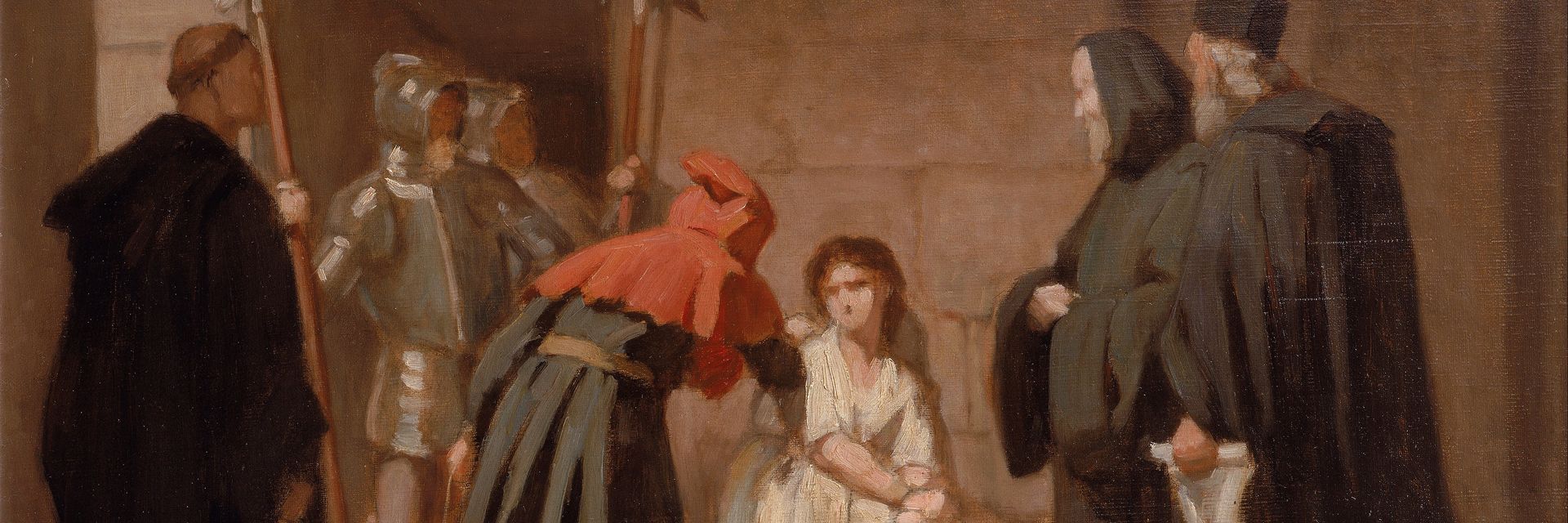Centuries before the Spanish Inquisition, a small sect of free-thinking Christians – the Cathars – thrived in southern France. Their anti-materialistic views ran counter to the worldly Roman Catholic Church of that age, and in the Church’s eyes they had to be stamped out by any means. Those means amounted to the wholesale persecution and ultimate extermination of the Cathars using torture and mass slaughter, and became a blueprint used repeatedly over the next 600 years.
◊
For most people, the Inquisition refers to the grave injustice perpetrated in Spain for more than 350 years, beginning in 1478. Yet that was not the first of the Inquisitions. It was, in fact, at the start of the 13th century that the medieval Roman Catholic Church first got into the Inquisition business, with its determined and multiple attempts to rid the world of out-of-step believers, in particular a sect centered in the Languedoc region of southern France, the Cathars.
Who Were the Cathars?
The Cathars arose in the Languedoc region of southern France in the mid-12th century. Catharism was at first centered in the town of Albi. Religious philosophy from the East, including Gnosticism, affected the sect’s development, likely spread alongside trade routes. Adherents soon began to adopt asceticism – abstaining from sexual contact, eating no meat from any living thing, and living non-materialistically. The inner circle of Cathars, called the Perfecti after they received the Consolarium (the Cathar’s only liturgical ritual), shared their beliefs widely.
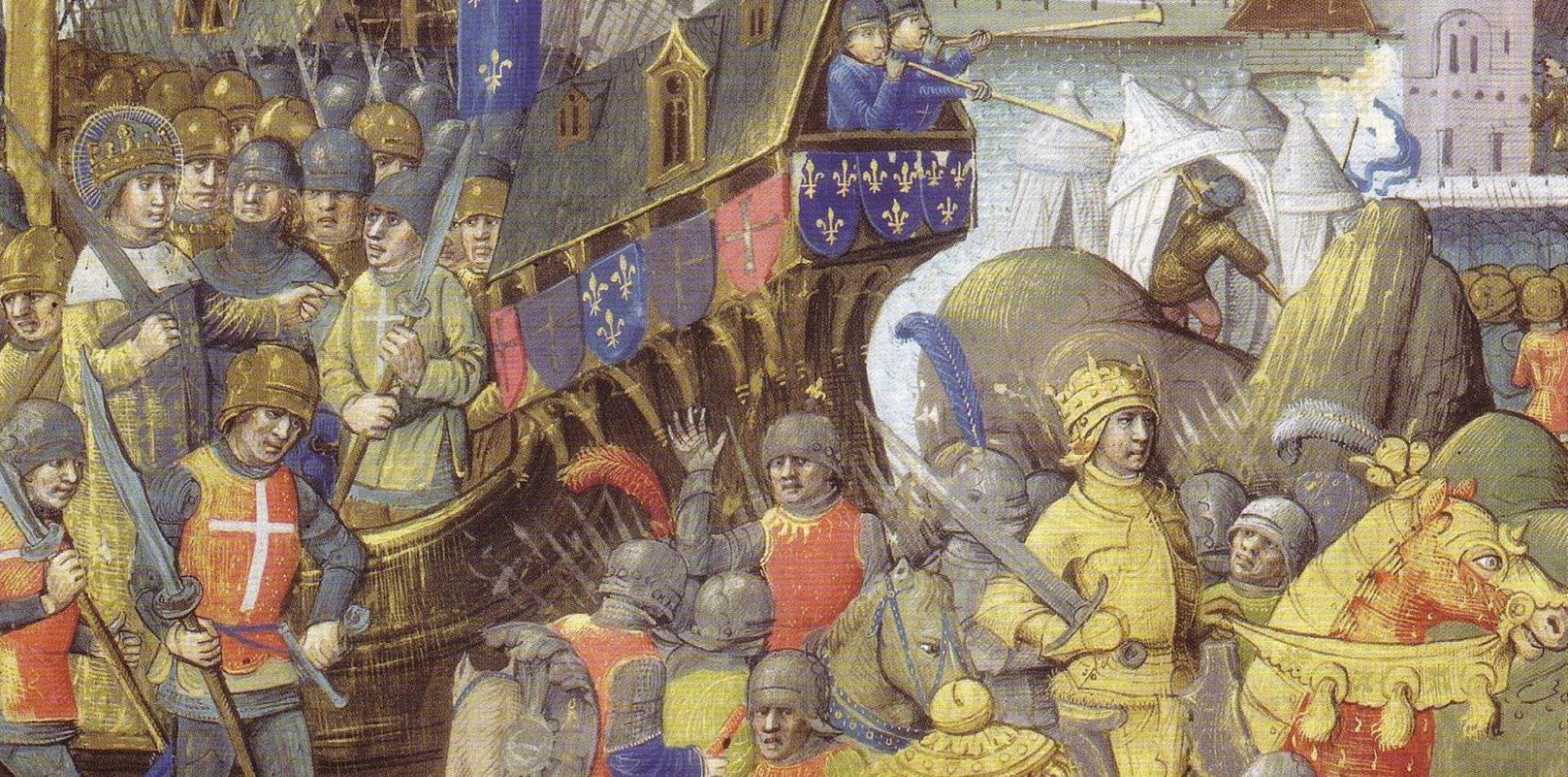
Catharism grew in size and influence between the years of 1140 and 1170 and attracted many followers, called “believers,” who were given the teachings but not expected to live ascetically nor abstain from sex. Only at death were believers to receive the Consolarium, which promised them release from a cycle of reincarnation and entry into an immaterial heaven, presided over by the god of goodness and light.
A Dualistic View of the Spiritual and Physical Realms
The Cathars believed in two gods, one – the “good one” – who presided over the non-materialistic world of spirit and pure mind, and the other one, the god of creation, a “lesser god” represented by the Old Testament deity. Catharists referred to the lesser god – Rex Mundi, the “king of the world” – as Satan. The god “not of this world,” the one referred to by Jesus in the New Testament, is the god with whom they sought communion.
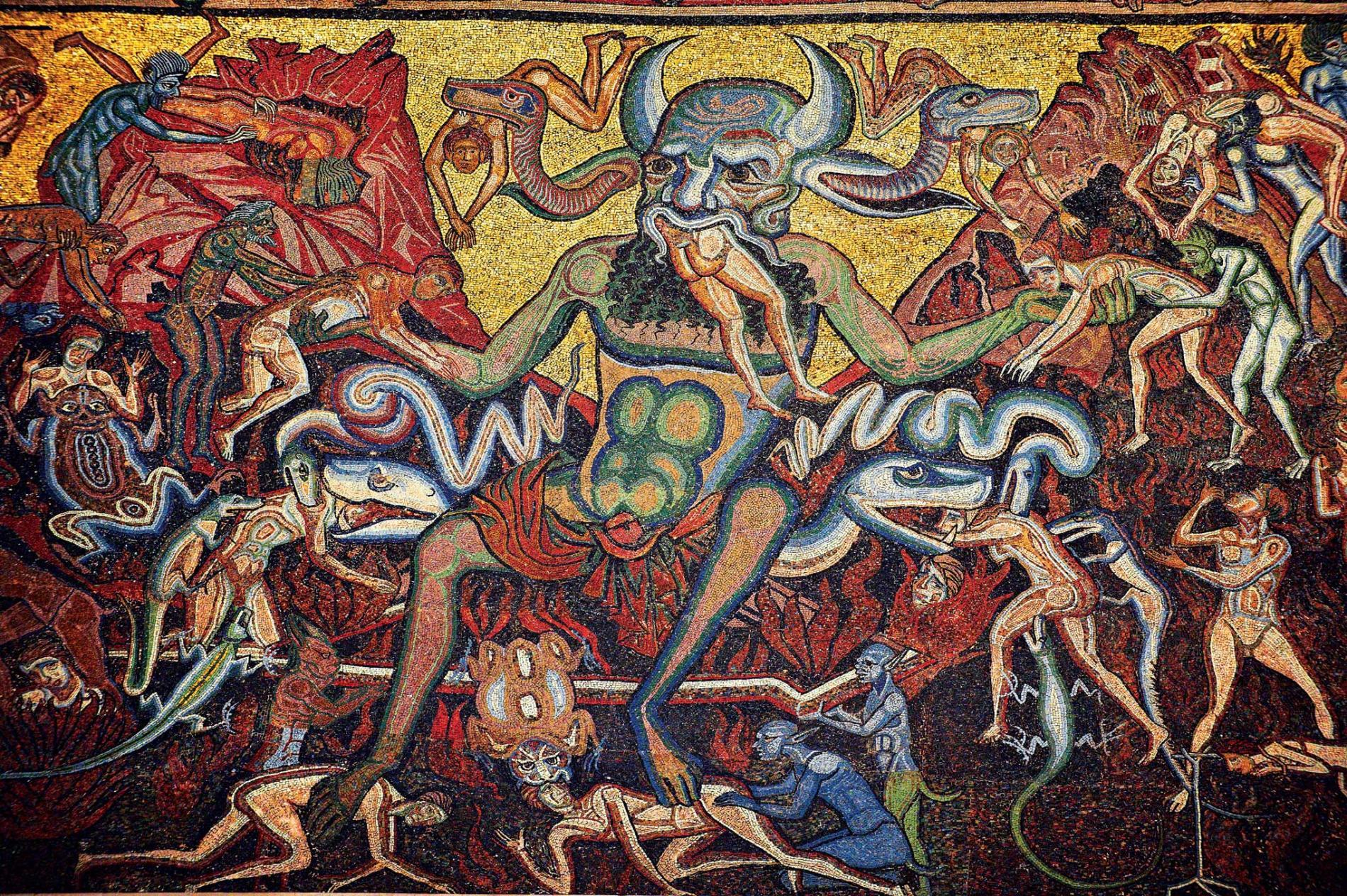
Satan, ceilng of the Florence Bapistery, by Cappo de Marcovaldo, c. 1260
The Cathars believed that all elements of this material world were corrupt and of the devil, and were remarkably open-minded about all manner of things that were forbidden – such as non-procreative sex or suicide – by the dominant religion of the country, Catholicism. So it’s unsurprising that many common folk were attracted to the sect’s teachings.
Men and women were equal to the Cathars; women could become Perfecti and preach. Believers, those who had not received the Consolarium, were immune from the rigors of asceticism, and sex for pleasure was not considered a sin. Notably, however, a woman could only be released from the cycle of reincarnation when she had returned in the form of a man – as Jesus had.
The worldliness of the Church of that era did not escape their attention. Cathars viewed Roman Catholicism as fully a part of the material world, and under the sway of the “lesser god.” Cathars were known to point out the hypocrisy of Church leaders, who lived in splendor and often were married or had mistresses while preaching the gospel of penance, suffering, and celibacy.
The Church Notices
The powerful Church, with strong lines of connection to all of France’s Catholic royalty, could not have escaped noticing this threat. As early as 1184, plans were afoot to squelch this apostasy. The Pope at the time, Lucius III, created a document called “Ad abolendam” (“to be abolished”), which essentially established the charter of the Inquisition to come.
At first, though, the Church attempted to win the argument between the two faiths by reason. Starting in 1198, it sent emissaries to all the major towns of the region – Toulouse, Albi, Béziers, Carcassonne – to engage in public debates and attempt to change people’s opinions and allegiances. That they were unsuccessful is something of an understatement; they were disliked for their imperious approach and sent packing.
The Albigensian Crusade: The Church Goes on the Offensive
Pope Innocent III would simply not tolerate such poor results, but fortunately a group of mendicant priests, including the future St. Dominic, counseled the Pope, in 1206, to try a different approach. Give the people a chance to repent, but if they did not, use any force necessary to overcome such heretical insubordination.
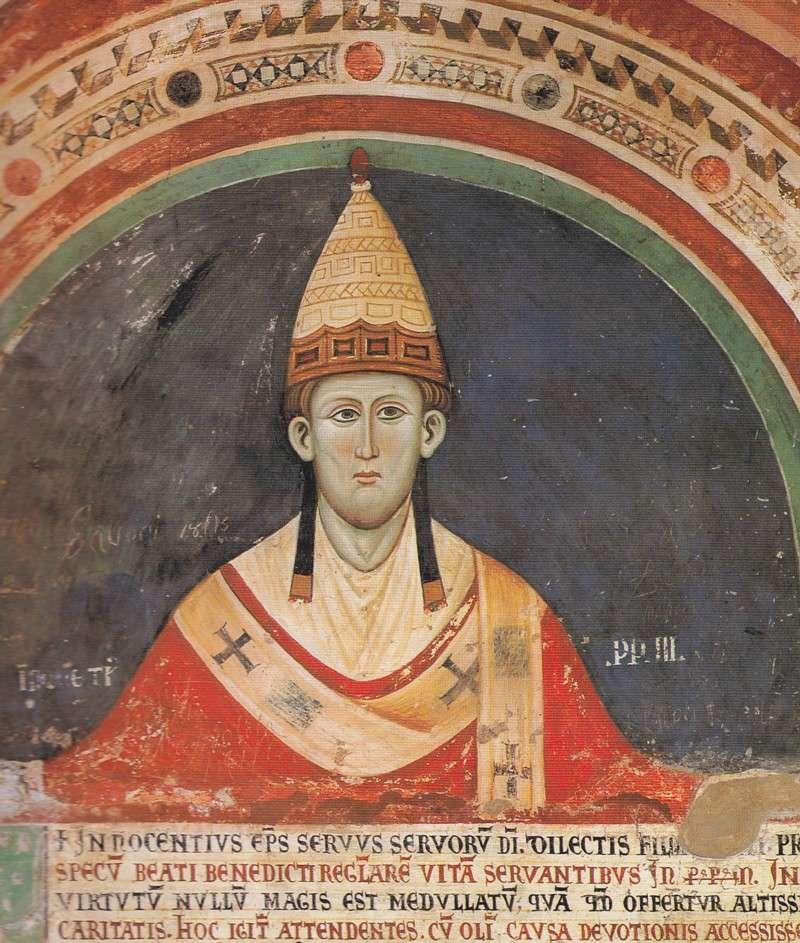
Pope Innocent III (Source: Brittanica.com)
Innocent III came to see the wisdom of this advice. He communicated with French King Louis IX to put together something of a new Crusade, but it wasn’t an easy proposition. A Crusade had never been attempted on nominal Christians, especially within the borders of a Catholic country.
But eventually Innocent hit on an offer the King and his noblemen couldn’t refuse. If they conquered any land or property held by Cathar sympathizers, they could claim it for their own. And so, in 1209, began the attack called the Albigensian Crusade, named after the Cathar stronghold of Albi.
The Inquisition Targets the Faithful
In the first year of the armed assault, mercenaries encircled the town of Béziers, ready to attack on order. But a group of commanders were concerned that there was no way to ascertain which of the attacked would be Cathars, and which were Catholic. They sought counsel from their spiritual advisor, the Cistercian monk Arnaud Amaury. Memorably, he is said to have uttered the fateful words, “Kill them. For the Lord knows who are his,” which has since been passed down to become the bumper-sticker slogan, Kill them all, and let God sort ’em out.
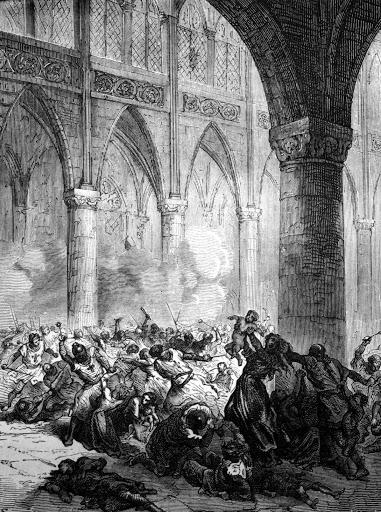
The Massacre at Béziers (Engraving anonymous, 19th century)
That is exactly what they did. Over the course of one gruesome day, an estimated 20,000 people, virtually the entire population of Béziers, were slaughtered and their city razed, burned to ashes. This campaign of shock and awe continued throughout the region, and finally, in 1229, the gentry and noblemen still standing in the south of France negotiated a peace treaty. In fact, it was more a surrender pact, as the landowners ceded control of their property to the nobles who financed the attacking army.
The Inquisition Launches
One might think this would mark the end of the story, but it’s actually just the beginning of a new, even more intense historical chapter, one that lasted from 1233 to the eventual execution of the last known Cathar in 1325. The Church of that day was not satisfied with the outcome of the Crusade, possibly because not every Cathar had been exterminated, and possibly because they felt the French nobility got too good of a deal with the land transfer and wanted to get their hands on some of the loot and lucre themselves.
In 1233, Pope Gregory IX sent members of the newly established Dominican order to Albi, Toulouse, and Carcassonne with instructions to show no mercy to people who would not submit, confess, and accept their penance. They were also on the lookout for forbidden books, which included the Christian Bible. (In 1229, at a synod held in Toulouse, Church hierarchy had forbidden individual ownership of the Bible, as well as any versions that had been translated into the vernacular from the official Latin).
With the support of the Church, the Dominicans’ “task force” was well prepared to engage in extreme forms of persuasion. The Church’s Fourth Lateran Council in 1200 permitted torture as a tactic, a feature explored in graphic detail in MagellanTV’s The Inquisition. (Note: contains scenes that may not be appropriate for sensitive viewers.)
First, the Grace Period – Then the Torture
Once the black-robed medieval Dominicans arrived in a town, they sent out a call for people to come forward voluntarily during a brief window of time to confess their heresy, name their guilty compatriots, and receive their “penance,” which might include lashing with a whip but rarely more than that. This was announced as the “period of grace,” which allowed for Christian mercy, relatively speaking.
After the inquisitors exhausted the volunteers and extracted the names of fellow “heretics,” the dark days began. Starting with the names they had, the Dominicans forced residents into long periods of interrogation that would last for hours. Ironically, claims of innocence were used as evidence of complicity.
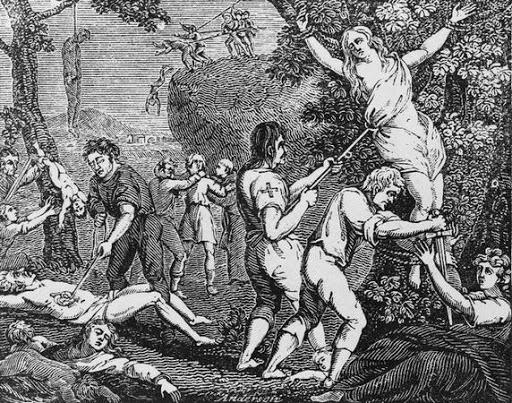
Massacre of the Protestants in Calabria, c. 1500-1700 (Source: Library of Congress)
The interrogators denied any rights to the accused, or to their allies among the townsfolk, who were also subjected to interrogation and torture. All this physical violence and maiming took effort, training, and trial. By 1249 the Dominicans had compiled the first handbook for inquisitorial practice, which codified the procedures as well as the specific types of persuasion and torture used in order to extract the most detailed confessions.
To keep themselves and their torturous behavior free of sin, the inquisitors “blessed” their implements with holy water each day, and had the ability to bless each other after interrogations to consecrate their behavior.
Still, they were not done. Persons who survived the process and were declared forgiven, having ultimately confessed, were made to wear yellow crosses on their clothing at all times. They were “cleared,” but suspicion stayed with them in case they relapsed into heretical belief. This had the effect of ostracizing them as a group, separating them from former friends, neighbors, and family, who could easily fall under suspicion themselves.
Those who were found guilty, who somehow managed to maintain their devotion to Cathar beliefs, were either hanged or burned at the stake en masse, in public, to make a spectacle of their immolation and extermination, and to instill fear among the bystanders. On Friday the 13th of May, 1239, 183 Cathars were burned at the stake in Carcassonne; after a two-year siege of the Cathar’s final sanctuary city, the mountaintop refuge of Montségur, more than 200 Cathars were immolated on March 16, 1244. It was said that the sky bled red.
If a family was accused of heresy, and they managed to convince the inquisitors that the family heretic had already died, the interrogators would exhume the dead body, cart it through the town, and burn the corpse at the stake. This ghoulish tactic allowed the Church and its royal sponsors to seize the land and possessions of the dead person’s heirs.
After many years of continuous terror and fear, and the ongoing despoilment and seizing of their land, the Languedoc region was exhausted and impoverished. King Louis had expanded his land holdings, and the region’s original gentry were bankrupt and landless. It took a while, with more mass burnings in 1278 and 1307, but finally, after the 1321 burning of the final Cathar Perfecti, the Inquisition against them ended in 1325.
The Long Shadow of Man’s Inhumanity to Man
The zeal and moral certainty exhibited by the medieval Church’s inquisitors resulted from their hubris. They presumed they were doing the will of God by extinguishing all thought that did not conform to their interpretation of faith. The inquisitors and the medieval Church leaders who appointed them institutionalized persecution and created a bureaucracy that arguably lasted until the 20th century, when the Catholic Church’s Vatican-based Congregation of the Inquisition was officially reformed as the Congregation for the Doctrine of the Faith.
At the dawn of the third millennium, in 2000, Pope John Paul II issued an Apostolic Letter titled Tertio millennio adveniente (loosely, “Preparing for the third millennium”). In it, the Pope asks for forgiveness for many of the failings of the Church over the previous 1,000 years. Without mentioning the Inquisition by name, he does apologize for “the use of force in the service of truth.”
The final public burning at the stake was in Spain in 1826, even though inquisitions were officially banned when, in the spirit of the Enlightenment, Napoleon prohibited them after conquering Spain in 1808. But the tactics and techniques of the Inquisition outlasted the period.

President Ronald Reagan and Pope John Paul II, at Fairbanks Airport (Alaska), 1984 (Credit: White House, via Wikipedia Commons)
The shadow cast upon civilization by this long-lasting scourge extends to our time, and examples of institutional suppression and violence abound in modern history, from the atrocities committed by the Japanese military in the “Rape of Nanjing” of 1937-38, to Jews being forced to wear yellow Stars of David under Nazi rule, to the systematic attempts by North Vietnamese captors to break the will and spirit of U.S. military prisoners during the Vietnam War, among many other episodes.
One could even argue that echoes of the Inquisition were afoot as recently as the legally sanctioned practice of “water-boarding” of prisoners by U.S. personnel – a torture originated by the medieval Dominicans. As the late U.S. Senator John McCain wrote in 2011, “This is a moral debate. It is about who we are.”
Ω
Kevin Martin is Senior Writer for MagellanTV. He writes on a wide variety of topics, including outer space, the fine arts, and modern history. He has had a long career as a journalist and communications specialist with both nonprofit and for-profit organizations. He resides in Glendale, California.
